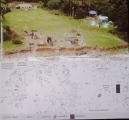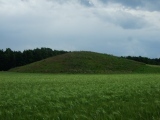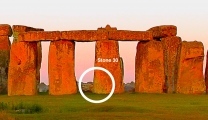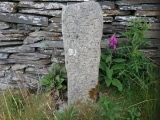Andy Burnham's Blog, page 194
June 29, 2020
Brainport Bay Standing stones and Alignment
Summer solstice 2020 from Brainport Bay. The only time the sun put in an appearance was well after it had risen but surely a lovely experience and photo nonetheless. Find out more about this intriguing site on our page. Standing Stones with possible alignment overlooking Brainport Bay. Two sighting stones and viewing platform, with additional sites on the beach and at the top of the nearby hill. Researched and published by the late Scottish astronomer and archaeoastronomer Archie Roy.
Published on June 29, 2020 12:21
Whakapoāi
Whakapoāi is the site of a Māori Moa Hunter Culture settlement located at the mouth of the Heaphy River in the remote north west of the South Island of New Zealand. It is one of the earliest Māori settlement sites, dated to around 1250 AD, meaning that the settlers' parents or grandparents may well have been born in Polynesia. The site is a five hour hike north from Karamea along the Heaphy Track.
Published on June 29, 2020 11:59
June 28, 2020
Jellhaugen Mound
Excavations have begun on the Viking ship found in 2018 by a ground penetrating radar survey. This (hopefully) amazing find is located right next to the monumental Jell Mound in Østfold County, Norway (pictured). More news in the links on our page. This is the second largest burial mound in Norway and among the largest in Scandinavia and Northern Europe, with a diameter of 85 metres and a height of around 9 metres.
Published on June 28, 2020 03:29
June 22, 2020
Heel Stone
From the sunrise this morning (Monday) Simon Banton's photo confirms Terence Meaden's Heelstone shadow casting hypothesis. In this enhanced image the lower left corner of Stone 30 is in shadow - the Heelstone's shadow. More details in the comments on our page. . Stonehenge's famous outlier. A single large block of sarsen stone standing within the Avenue outside the entrance of the Stonehenge earthwork.
Published on June 22, 2020 13:31
Durrington Walls
A series of massive geophysical anomalies, located south of the Durrington Walls henge monument have been identified during a fluxgate gradiometer survey undertaken by the Stonehenge Hidden Landscapes Project. The diameter of the circuit of pits exceeds 2km, so potentially the biggest prehistoric monument in Europe. There seems to be evidence of mathematics being used to lay out the site, and a summer solstice alignment. Best preserved on the north-east side, this great henge monument not far from Stonehenge measures 520m from north to south and 450m from east to west (the diameter of Avebury is 427m). The bank was originally 27m wide. The ditch was up to 42m wide and was 6m deep.
Published on June 22, 2020 12:35
June 18, 2020
Brunstein
The Brunstein is a reddish-brown granite erratic block near the city centre of Bochum. It is also called Alter Riesenstein ("old giant stone"). Brunstein has a height of 0.9 m and a circumference of 4.25 m. The stone is believed to have been important in the Neolithic and/or Bronze Age, even though its function is not clear. It could have been used to calculate summer solstice, or it may have served as a tombstone or as a holy stone on which animals were sacrificed.
Published on June 18, 2020 02:34
June 16, 2020
Tullymurdoch
Situated about 90m SW of the Parkneuk four-poster (see nearby sites list), in the midst of a little wood, is this rather ruinous collection of stones, mostly recumbent. It's difficult to say what arrangement these were once in, as the stones are now rather scattered. Two recumbent outliers in front, looking SE towards the remains of the circle.
Published on June 16, 2020 04:15
Cantiorix Lies Here
Replica of a 5th or early 6th Century AD head stone and information slate plaque. Located outside a Welsh Water reservoir/depot. Limited parking at the entrance gate to the Welsh Water site. Just off the B4391.
Published on June 16, 2020 02:18
June 13, 2020
Nunyerry Creek
Published on June 13, 2020 00:32
June 11, 2020
Campo Iruña Veleia
Spanish archaeologist sentenced for faking Basque finds. Veleia was a Roman town in Hispania, now located in the Basque Autonomous Community, 10 kilometers west of Vitoria. The town was an important station on the Roman road ab Asturica Burdigalam that ran parallel to the coast of the Bay of Biscay. It was alleged to contain the oldest known texts written in the Basque language as well as, allegedly, the oldest representation of the crucifixion of Jesus found to date. Later these finds were exposed as forgeries. (see comment below)
Published on June 11, 2020 14:54













